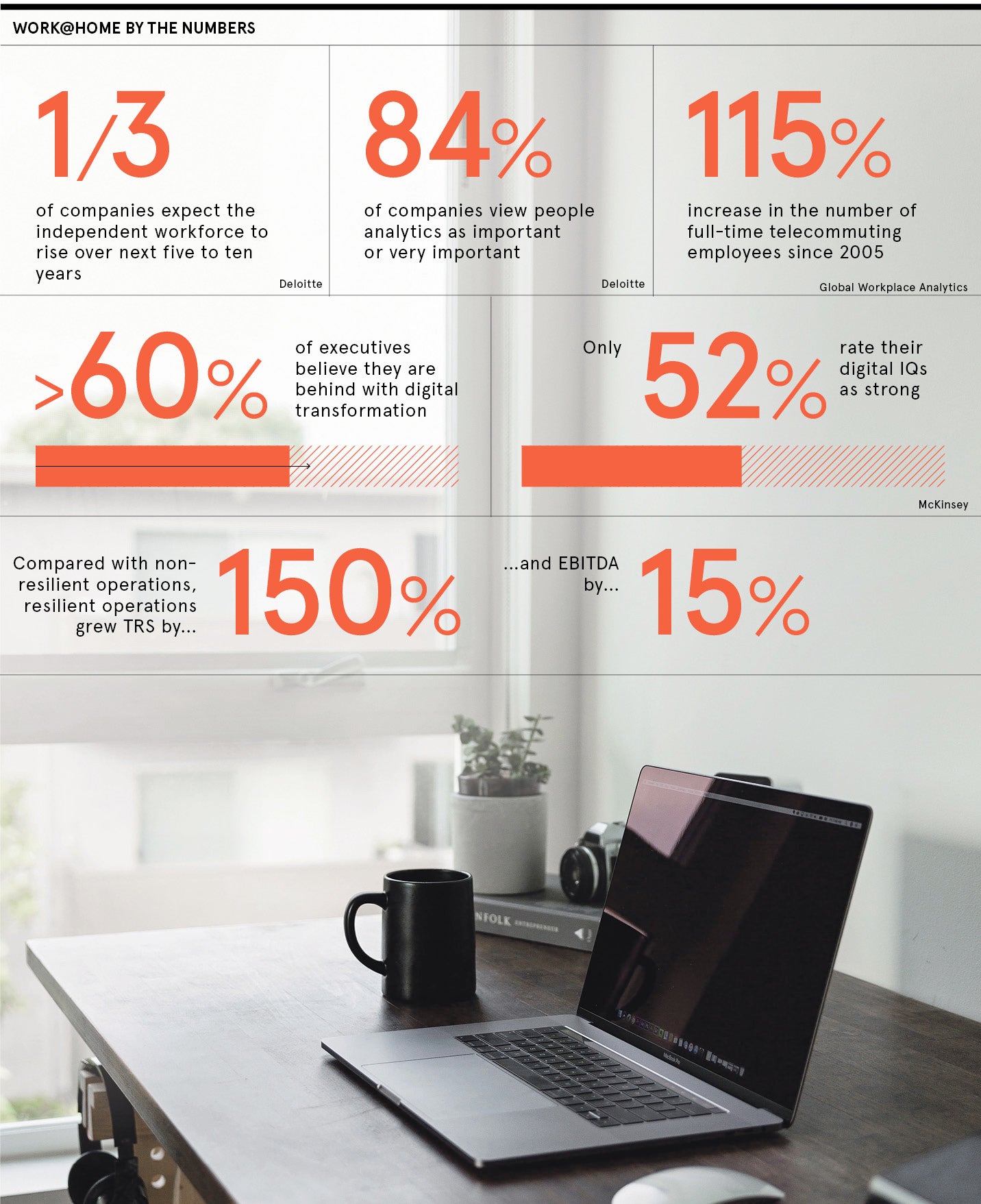Market forces and competitive pressures facing businesses have accelerated drastically in recent years. Customer expectations are evolving and the mechanisms through which people want to interact with companies are expanding. Meanwhile, lower barriers to entry are enabling startups to disrupt marketplaces, driven by an agility they are born with in the cloud, and regulations cause further complexities.
All the additional pressure on organisations is placing an alarming strain on back-office operations, which are often not agile enough to adapt in this fast-changing business landscape and respond to new risks and challenges. As a result, companies are increasingly realising they urgently need to transform and simplify their back office.
“It’s hugely important because fundamentally it’s where the rubber hits the road,” says Richard Jeffery, chief executive of ActiveOps, a provider of digital operations management solutions. “As companies embrace digital transformation, they can promise the world, but ultimately they have to be able to execute. The back office is the point at which all those things come together and have to get done. The ability of an organisation to exploit its back office to deliver advantage will determine its future success.”

Businesses that can be nimble because their operations are flexible and adaptable to changing specifications have a huge advantage in the digital age. However, it is common for large organisations to lack the visibility, efficiency and agility they require across their back-office operations to enable that nimbleness. Many have built up their workforce management toolkits over a long period and the strategies they have for controlling performance in their business were built in the 19th or 20th centuries.
These strategies, systems and protocols are no longer fit for purpose and companies are increasingly discovering that the controls they have in place don’t work anymore because they can’t operate at the speed or precision the business now requires. Back-office operations that lack agility and visibility will produce more waste and will struggle to respond when customers expect. According to ActiveOps, most organisations carry an average of between 14 and 20 per cent wasted capacity in their operations.
“That’s the consequence of having the capacity locked into teams,” says Jeffery. “However, back-office operations management has always been an amateur sport; it’s not something which typically has been systemically addressed. Each different function has its own lingua franca for control. The demands of digital are requiring that to change and this is why so many companies are struggling. There’s nothing wrong with their ability to implement new business processes, but they can’t control them.”
ActiveOps is a systemic solution for managing work capacity and simplifying the running of operations. Within most organisations are numerous localised or siloed ways of managing work, which result in inefficiencies and a lack of productivity. Workware+ from ActiveOps (operations management technology) provides the metrics and method for balancing work capacity. It is a simplifier in a world of growing business complexity, enabling organisations to act on their data quicker and control their operations more effectively regardless of the work location.
This simplification and control allows organisations to enhance their customer experience, improve their employee engagement and drive greater results for the business as they are able to respond faster to both challenges and opportunities in the marketplace. Through reducing all the complexity across the back office, ActiveOps has found that its platform can boost productivity by more than 25 per cent.
Organisations that achieve this and regain control in their back-office operations also achieve efficiency through better use of time, quality from staff having the time to complete tasks to the best of their abilities, and even a greater sense of wellbeing because employees know what is expected of them and can celebrate their successes.
The ability of an organisation to exploit its back office to deliver advantage will determine its future success
“This manifests for customers because they get the products and services they want and can interact with companies through the channels they desire, and it also manifests for other stakeholders because the business is in control,” says Jeffery. “As any psychologist will tell you, the biggest cause of stress is feeling out of control. By deploying ActiveOps, organisations, teams and individuals can better determine outcomes by knowing what’s going to happen and being able to execute on that.”
As the trend of self-service moves the function of business operations closer to the customer, the need for expertise at the centre of the organisation is only going to increase. This means the value of the resources in the back office will go up too, and the effectiveness of those resources and the ways organisations are able to deploy them will become more difficult to consolidate because expertise is required in different places.
When resources are dispersed, as they increasingly are in businesses, the control and visibility that ActiveOps provides becomes crucial. ActiveOps offers significant advantages to distributed work environments, particularly home workers, enabling businesses to operate seamlessly no matter what challenges they face.
If it’s uneconomic to employ someone for a task that requires only half their time, companies need the visibility to allocate them to other tasks. They also need to be able to take advantage of the revolutionary artificial intelligence (AI) and robotic process automation tools in the market. Indeed, AI bots will power 85 per cent of customer service interactions this year, according to Gartner. But it requires systems that allow leaders to interpret and act on data, not drown in it.
“In the old world, you had a whole disparate bunch of systems where your people were working,” Jeffery concludes. “Those will continue to be buried under the surface while getting more diverse, more complicated and more complex. ActiveOps provides the interface that enables operational and business leaders to simplify that. The control over those devices is the differentiator, not your ability to pay for a new mainframe.”
For more information please visit activeops.com




